[EN/PT] Progress Of My Collection: New Legendary Goal
[EN]
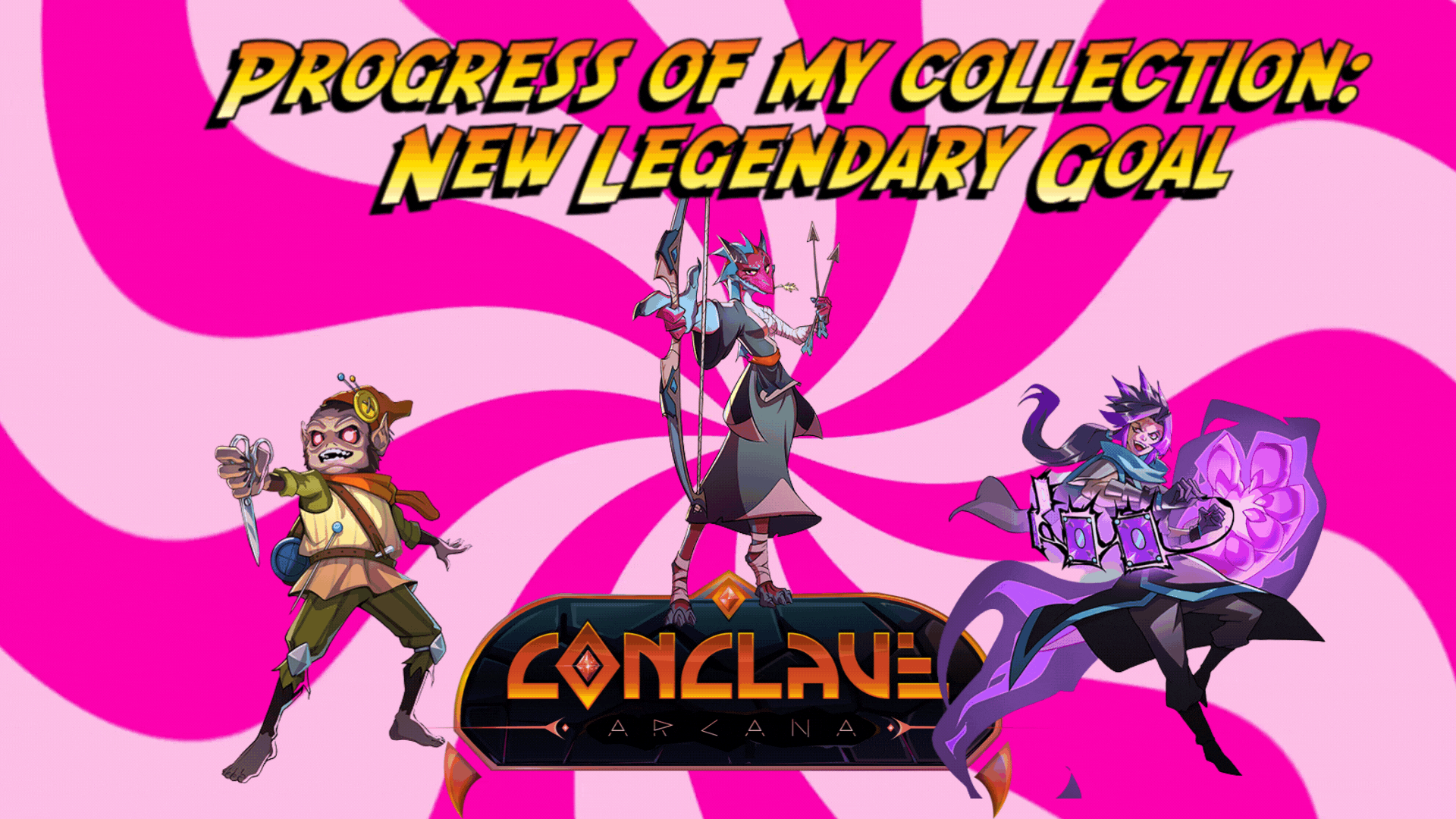
Hello Splinter Fanatics
Splinterlands is one of my favorite games, and as such, it has become one of my almost daily hobbies. The goal of strengthening your collection motivates players to buy or rent cards — or, better yet, play to earn new cards. This last option has become the main strategy within the game.
The Foundation collection is a recent example of this race to improve the deck. For me, Frontier mode has been the most fun so far. Even using basic level cards, the battles are exciting, as all players have pretty much the same set of cards. This makes it easier to predict strategies according to the Ruleset, to the point that many matches end in a draw.
The most exciting thing about this mode is that you can win random cards, including legendary and gold cards, and there is a small chance of getting Black cards and their variations.
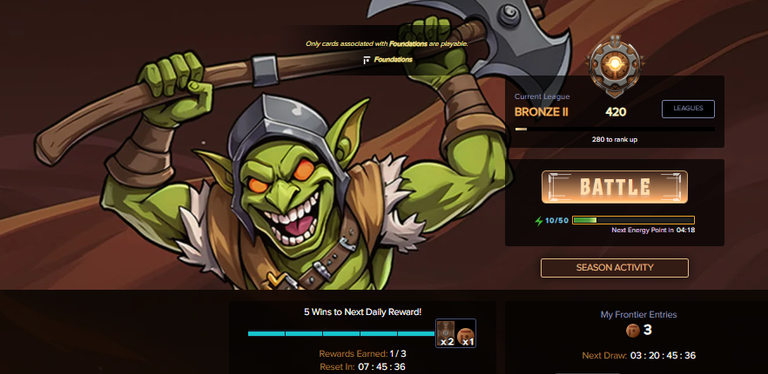
But the focus of this post is not the new battle mode or its cards, but rather my progress with the Rebellion Soulbond cards. At first, I concentrated my efforts on the epic cards—the most powerful in this collection. When I was about to reach 100% on them, I turned my attention to the common and rare cards, which are currently at 91% and 84%, respectively. Now, I've decided that the time has come to start investing in legendary cards as well.

It is very difficult to get legendary cards in chests, so the most efficient way to obtain them is by purchasing Legendary Draws. The problem is that the cost is quite high—35K Glint. So, I am always torn between opening Ultimate Chests or investing directly in legendary cards. In my last purchase, I opted to split the strategy: I acquired some legendary cards and also bought Ultimate Chests. The result was as follows:
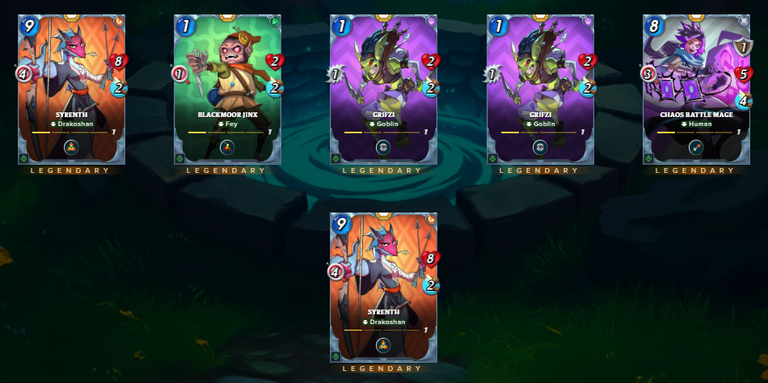

This time, I managed to get a legendary card, so it was worth buying the chests — although, most of the time, this strategy ends up being frustrating. I also got several epic cards, but unfortunately, I already have them all at the maximum level.
Still, with these new epic cards, I was able to evolve three of them to level 2: Blackmoor Jinx, Chaos Battle Mage, and Syrenth. The latter, in my opinion, is the most powerful among the legendary cards in this collection.

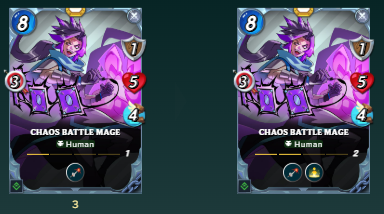
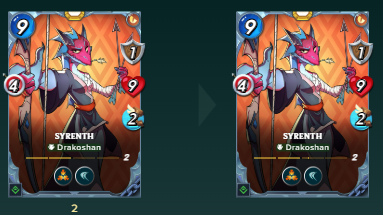
Currently, my main goal in Splinterlands is to raise all my Reward Rebellion cards to the maximum level. The deadline for this is relatively short, as we will soon have the announcement of the new Reward Conclave Arcana cards.
For epic cards, this goal has already been achieved: I have 100% of them at the maximum level. I am very pleased with this achievement, as it was the result of a lot of dedication and strategy within the game.
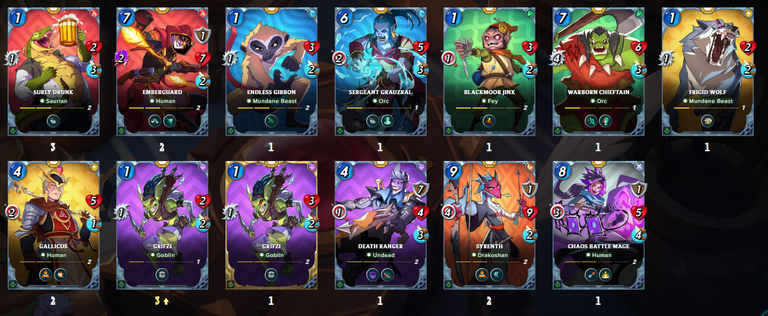
Tomorrow we will have another end of season (EOS), which will be a great opportunity to acquire new Rare and Legendary Draws. Lately, I have been slowing down on Splinterlands — not because I don't enjoy the game, but because I need to devote more time to other projects in the real world. Still, as long as I can play, even if only a few times a week, I'll keep playing. The consequence, of course, is earning fewer Glints.
My collection has been focused mainly on Rewards cards, and oddly enough, they help a lot. You don't need to rent many cards — just a few summoners and support cards — to get good results in battles. That's exactly what makes me love Splinterlands so much: it doesn't take much to start playing, and little by little, the player can (and should) improve their collection.

With these Reward cards in hand and new levels achieved, it was time to test them in battle. This battle featured the Rulesets: Beefcakes, Armored Up, and Aimless. In addition, there was 44 mana available and the following Splinters available: Water, Death, and Dragon.

In this situation, with all monsters receiving additional armor, magic damage monsters become the players' preference. Randomness makes this a battle in which luck plays a decisive role in victory — especially if we choose many magic damage and ranged monsters.
So, I chose Archon Akane from Splinter Dragon, which also allowed me to select Splinter Death. Above, we can see the lineups of both players. My opponent also chose Splinter Dragon, but opted for Archon Nidhoggr, a very offensive card, but with an absurdly high mana cost.
Click here to watch the entire battle!
As can be seen in this battle, most of the cards chosen are Rebellion Reward. I have chosen to play exclusively with these cards, almost completely abandoning the others, to save on rental costs. After all, with just these cards, I can maintain a good daily win rate.
Right in the first round, I lost a monster: the Dragon Egg Forager, which was attacked by my opponent—who also used this card. The difference is that his had the Execute ability, which allows you to perform a new attack when the enemy has 2 or less health.
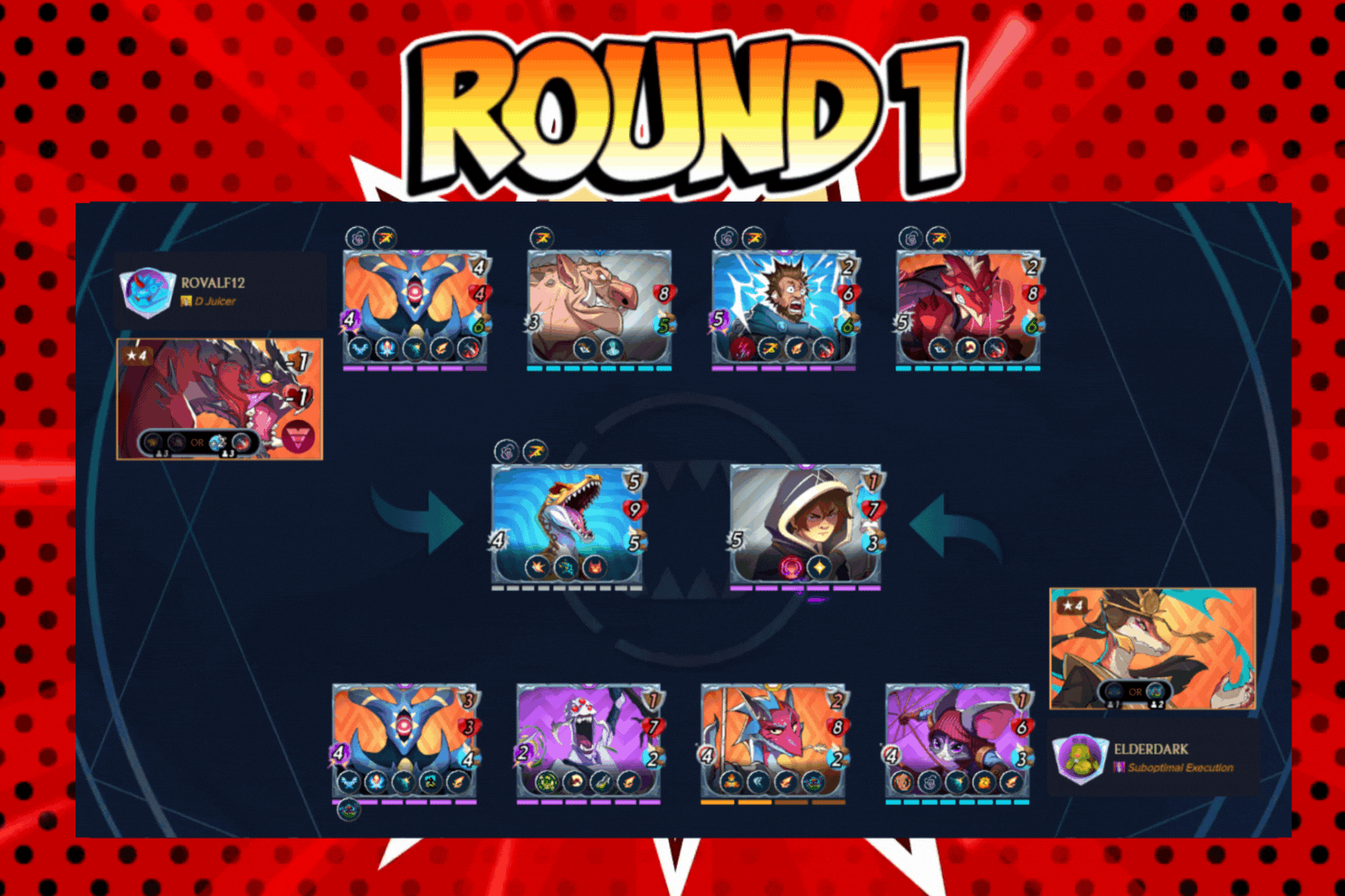
In this battle, the opponent's strategy was really good, as he had many monsters with very offensive damage and also combined with the Execute ability. So, any random attack could mean the end for our monsters.
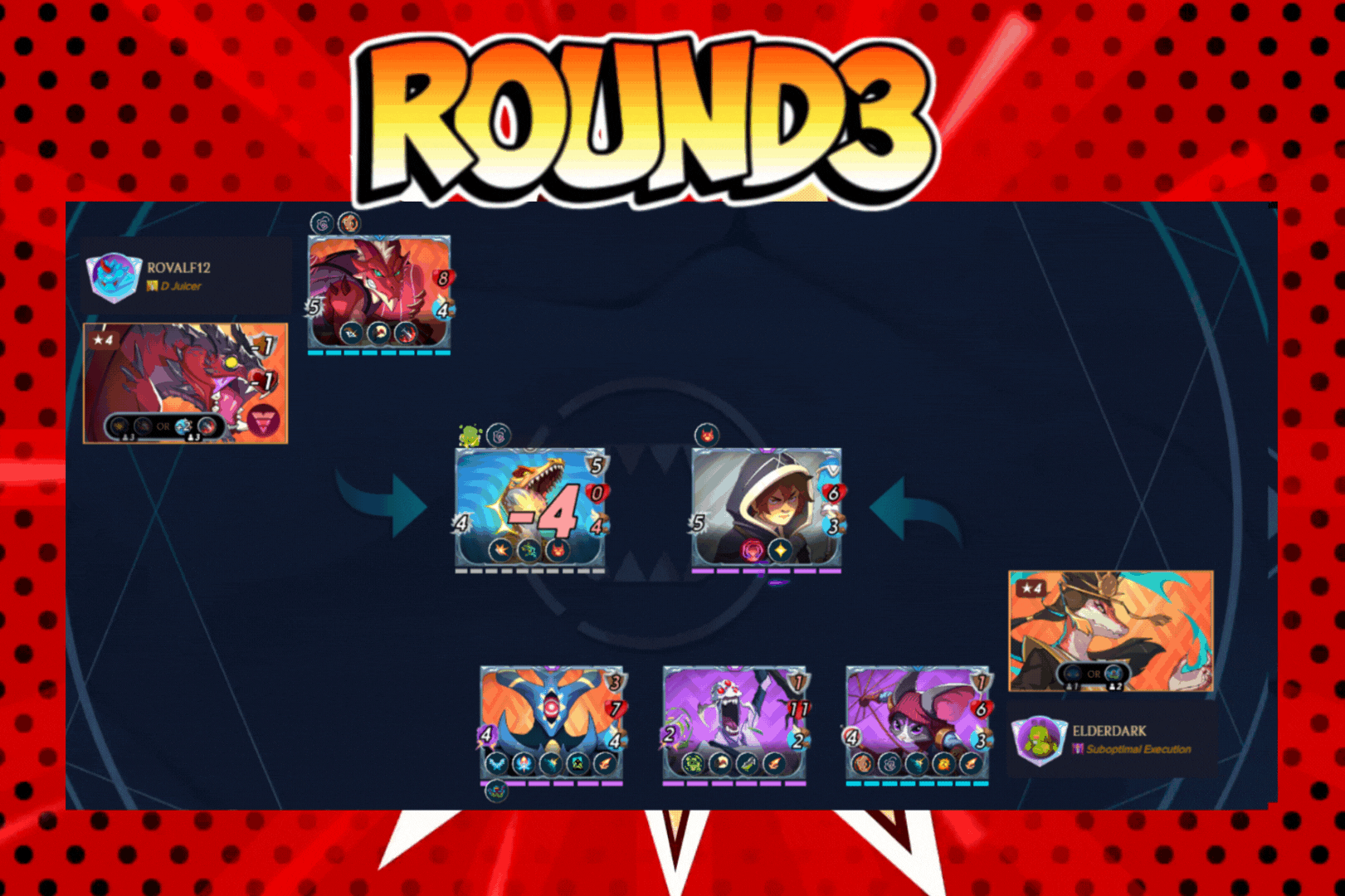
The battle ended with only one monster left on the opponent's side, but it was quite a challenge. What really saved us was the randomness, which gave my team time to heal. It was a very close contest, using only Soulbond cards.
Therefore, it is essential to always evolve in Splinterlands to achieve better results. And there's nothing better than improving your collection without spending a penny. My advice is for players to choose a specific card rarity and start investing in Draws of that rarity until they reach the maximum level. I hope you enjoyed it!
If you've made it this far, thank you very much for your time, and if this content was useful in any way, please leave your upvote and reblog!
Images: @splinterlands
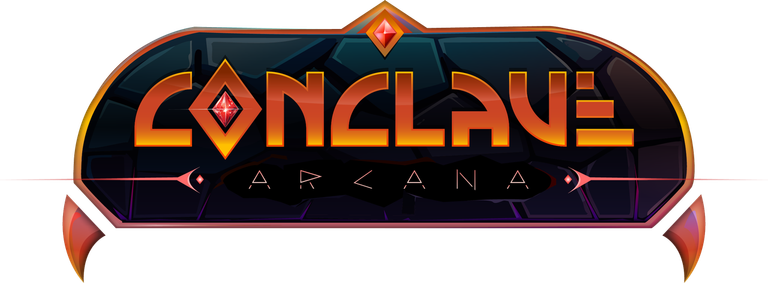
[PT]

Olá Splinter Fanáticos
Splinterlands é um dos meus jogos favoritos e, por isso, acabou se tornando um dos meus hobbies quase diários. O objetivo de fortalecer a coleção motiva os jogadores a comprar ou alugar cartas — ou, melhor ainda, jogar para conquistar novas cartas. Essa última opção tem se tornado a estratégia principal dentro do jogo.
A coleção Foundation é um exemplo recente dessa corrida para melhorar o deck. Para mim, o modo Frontier tem sido o mais divertido no momento. Mesmo utilizando cartas em nível básico, as batalhas são emocionantes, já que todos os jogadores têm praticamente o mesmo conjunto de cartas. Isso torna mais fácil prever estratégias de acordo com o Ruleset, a ponto de muitas partidas terminarem em empate.
O mais empolgante desse modo é que é possível ganhar cartas aleatórias, incluindo lendárias e douradas, além de haver uma pequena chance de conseguir cartas Black e suas variações.

Mas o foco deste post não é o novo modo de batalha nem suas cartas, e sim o meu progresso com as cartas Rebellion Soulbond. No início, concentrei meus esforços nas cartas épicas — as mais poderosas dessa coleção. Quando estava prestes a atingir os 100% nelas, passei a direcionar minha atenção para as cartas comuns e raras, que atualmente estão em 91% e 84%, respectivamente. Agora, decidi que chegou o momento de começar a investir também nas cartas lendárias.

É muito difícil conseguir cartas lendárias nos baús, por isso a maneira mais eficiente de obtê-las é comprando Legendary Draws. O problema é que o custo é bastante elevado — 35K Glint. Por isso, fico sempre dividido entre abrir Ultimate Chests ou investir diretamente nas cartas lendárias. Na minha última compra, optei por dividir a estratégia: adquiri algumas cartas lendárias e também comprei Ultimate Chests. O resultado foi o seguinte:


Dessa vez, consegui tirar uma carta lendária, então valeu a pena ter comprado os baús — embora, na maioria das vezes, essa estratégia acabe sendo frustrante. Também vieram várias cartas épicas, mas infelizmente já tenho todas no nível máximo.
Ainda assim, com essas novas cartas épicas, consegui evoluir três delas para o nível 2: Blackmoor Jinx, Chaos Battle Mage e Syrenth. Esta última, na minha opinião, é a mais poderosa entre as lendárias dessa coleção.



Atualmente, meu principal objetivo em Splinterlands é elevar todas as minhas cartas Reward Rebellion ao nível máximo. O prazo para isso é relativamente curto, já que, em breve, teremos o anúncio das novas cartas Reward Conclave Arcana.
Para as cartas épicas, essa meta já foi concluída: tenho 100% delas no nível máximo. Estou muito satisfeito com essa conquista, pois foi fruto de bastante dedicação e estratégia dentro do jogo.

Amanhã teremos mais um final de temporada (EOS), o que será uma ótima oportunidade para adquirir novos Rare e Legendary Draws. Ultimamente, tenho diminuído o ritmo no Splinterlands — não por falta de gosto pelo jogo, mas porque preciso dedicar mais tempo a outros projetos no mundo real. Ainda assim, enquanto for possível jogar, mesmo que apenas algumas vezes por semana, continuarei jogando. A consequência, claro, é ganhar menos Glints.
Minha coleção tem sido focada principalmente nas cartas Rewards e, por incrível que pareça, elas ajudam bastante. Não é necessário alugar muitas cartas — apenas alguns invocadores e cartas de suporte — para obter bons resultados nas batalhas. É exatamente isso que me faz gostar tanto de Splinterlands: não é preciso muito para começar a jogar, e, aos poucos, o jogador pode (e deve) aprimorar sua coleção.

Em posse dessas cartas Reward em novos níveis chegou a hora de testá-las em uma batalha. Essa batalha contou com os Rulesets: Beefcakes, Armored Up e Aimless. Além disso, havia 44 de mana disponível e os Splinters disponíveis: Água, Morte e Dagrão.

Nessa situação, com todos os monstros recebendo armaduras adicionais, os monstros de dano mágico se tornam a preferência dos jogadores. A aleatoriedade faz com que essa seja uma batalha em que a sorte tenha um papel decisivo para a vitória — especialmente se optamos por muitos monstros de dano mágico e ranged.
Assim, escolhi o Archon Akane, do Splinter Dragão, o que também me permitiu selecionar o Splinter Morte. Acima, podemos visualizar a escalação de ambos os jogadores. Meu oponente também escolheu o Splinter Dragão, mas optou pelo Archon Nidhoggr, uma carta bastante ofensiva, porém com um custo de mana absurdamente alto.
Clique Aqui para Assistir a Batalha Completa!
Como pode ser visto nessa batalha, a maioria das cartas escolhidas são Rebellion Reward. Tenho optado por jogar exclusivamente com essas cartas, abandonando quase totalmente as demais, para economizar nos custos de aluguel. Afinal, apenas com elas já consigo manter um bom win rate diário.
Logo na primeira rodada, perdi um monstro: o Dragon Egg Forager, que recebeu um ataque do oponente — que também utilizou essa carta. A diferença é que o dele possuía a habilidade Execute, que permite realizar um novo ataque quando o inimigo está com 2 ou menos de saúde.

Nessa batalha realmente a estratégia do adversário era muito boa, pois ele possuia muitos monstros com dano bastante ofensivos e ainda combiandos com a habilidade Execute. Então, qualquer ataque aleatório poderia significa o fim para os nosso monstros.

A batalha chegou ao fim com apenas um monstro do oponente em campo, mas ele deu bastante trabalho. O que realmente salvou foi justamente a aleatoriedade, que permitiu tempo para o meu time se curar. Foi uma disputa bastante acirrada, utilizando apenas cartas Soulbond.
Portanto, é fundamental sempre evoluir em Splinterlands para alcançar melhores resultados. E nada melhor do que aprimorar sua coleção sem gastar um centavo para isso. Meu conselho é que o jogador escolha uma raridade específica de cartas e comece a investir em Draws dessa raridade, até levá-las ao nível máximo. Espero que tenham gostado!
Se chegou até aqui muito obrigado pelo seu tempo e se de alguma forma este conteudo foi útil, deixe seu upvote e reblog!
Imagens: @splinterlands
Posted Using INLEO


Obrigado por promover a comunidade Hive-BR em suas postagens.
Vamos seguir fortalecendo a Hive
Thanks for sharing! - @cieliss
